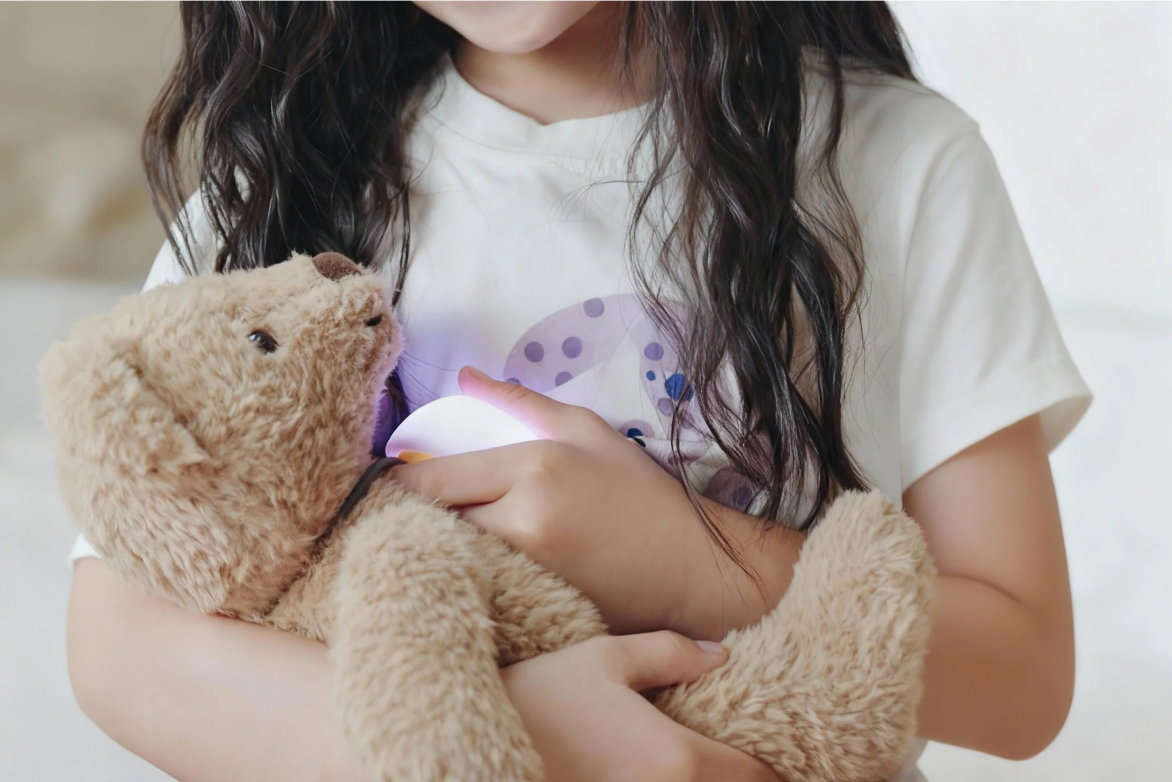A happy, engaged child with a thriving imagination is a critical component of a peaceful home. But even when surrounded by toys, hearing the constant refrain of “I’m bored!” can be frustrating. This isn't just a passing mood—it might be a sign that their play is too passive, lacking the interactive companionship they need to truly flourish.
Find out why interactive play is crucial for development and the telltale signs that your child’s boredom is actually a call for a true AI companion.
Why Interactive Companionship Matters
Passive entertainment, like watching videos, has its place. However, it’s through active, two-way interaction that children build self-awareness and security. Child psychology research shows that as a child’s social needs grow, they require feedback to develop their imagination and process their world. When play can listen, respond, and create with them, it ignites their potential in a way one-way entertainment simply can’t.

6 Telltale Signs Your Child Needs an AI Companion
Is your child’s boredom a signal for a deeper need? It might be if:
-
They frequently say, “I’m bored” or “Play with me.”
-
They have many toys but switch between them every few minutes.
-
They often talk to themselves or their stuffed animals.
-
They get upset when screen time ends.
-
They are clingy with you, yet quickly lose focus.
-
Their interest in reading stories is declining.
Keep reading for details.
1. They Frequently Say, “I’m Bored” or “Play With Me”
This is the most direct signal. When a child aged 3-8 repeatedly says they are bored, they are often communicating a need for social and emotional companionship. They have a growing desire for “social play” but still lack the ability to structure it independently. This phrase is their signal that they are looking for a partner to provide emotional responses and engage in imaginative interaction.
2. They Have Many Toys But Switch Between Them Every Few Minutes
You’ve provided a room full of toys, yet none seem to hold their attention for more than five minutes. This isn't necessarily a sign of a poor attention span. It often means the toys lack interactive feedback. Without a sense of co-creation or response, a child’s interest naturally fades. They aren't looking for another object; they are looking for a playmate who can react to their ideas and help the story unfold.3. They Often Talk to Themselves or Their Stuffed Animals
Private speech is a normal and healthy part of child development. However, when you notice your child frequently creating one-sided conversations with their dolls, they are engaging in a substitute for real interaction. They are essentially casting their toys in the role of a listening friend. This is a clear sign they are craving a partner who can turn that monologue into a dialogue, making them feel truly heard and understood.
4. They Get Upset When Screen Time Ends
5. They Are Clingy With You, Yet Quickly Lose Focus
Your child follows you from room to room, asking for attention, but when you sit down to play, they are distracted within minutes. This behavior is common in the 3-8 age range, where children balance their need for parental attachment with a desire for independent exploration. The clinginess is a bid for connection, but what they truly need is a secure, ever-present companion that allows them to play independently while still feeling supported.
6. Their Interest in Reading Stories Is Declining
Has storytime become a battle? If your child prefers watching videos over reading books, it’s often because they have become accustomed to passive, visual entertainment. Traditional reading can feel flat by comparison. They are missing a sense of participation in the narrative. This is a sign they need a way to make stories interactive again, where they are not just a listener but a co-author of the adventure.
What Happens If You Ignore These Signs?
When these calls for interaction are consistently unmet, a child may become more reliant on passive screens, potentially impacting their emotional regulation and attention span. The crucial developmental window for building imaginative and social skills through play can be narrowed if they don’t have an engaging, interactive outlet.
The True Fix for a Lack of Engagement
The solution is not more toys, but more interactive play. You need a tool that can provide the consistent feedback and companionship your child is craving. An AI companion is designed to fill this exact gap, turning passive play into an active, creative dialogue. It meets their social and emotional needs on their terms.
Give Them a Friend Who Listens: The Haivivi BubblePal
The Haivivi BubblePal is engineered to be the perfect interactive companion to solve these core developmental needs. It’s a tool for connection, designed with both child and parent in mind.

It attaches to any toy your child already loves, giving their favorite friend a voice. It’s ready to have infinite conversations, co-create imaginative stories , and answer endless questions about science, history, and the world. Most importantly, it serves as an emotional companion, listening to their feelings and offering supportive responses. Made from safe, FDA food-grade silicone and managed by parents through the HaiviviPal App, it offers peace of mind.
It’s not about replacing a toy; it’s about giving their favorite friend a voice and their imagination a true partner.

